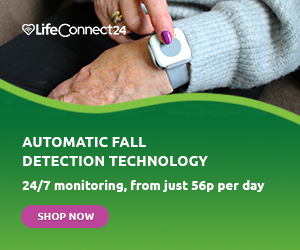Common treatment for a stroke focuses on measures to counter blood clots or to reduce bleeding in or around the brain.
The type of treatment depends on the cause of the stroke. Ischaemic strokes are the most common and result from a blood clot getting into the brain. Haemorrhagic strokes are caused by bleeding from a burst blood vessel. Both types of stroke starve the brain of oxygen and nutrients, damaging or killing cells.
Prompt treatment is critical for strokes in order to lessen the danger of brain damage that can lead to significant physical and mental health issues or even death. The most effective treatment will be determined by a series of tests. Hospital stroke units carry out brain scans and check your:
- Pulse rate.
- Blood pressure.
- Cholesterol and sugar levels in the blood.
Typically, treatments entail taking one or more types of medication, although surgery may be necessary in some cases.
Common Treatment for Ischaemic Stroke
If you’ve suffered an ischaemic stroke, it’s vital to restore blood flow to your brain as quickly as possible. Fast treatment improves chances of survival and can also reduce the risk of complications.
Antiplatelet Medication
Ischaemic stroke patients are usually given antiplatelet medication to treat the condition and prevent further blood clots. Some medications need to be taken immediately for the short-term, while other, long-term medication may be introduced once the stroke has been treated.
Most people who have had an ischaemic stroke will be given aspirin regularly. Aspirin is an antiplatelet as well as a painkiller. Other antiplatelet medicines include clopidogrel and dipyridamole.
Anticoagulants
Anticoagulants help to lessen the risk of further blood clots. They prevent clotting by altering the chemical composition of blood. Anticoagulants suitable for long-term use include warfarin and apixaban.
Thrombolysis
According to the NHS, another common treatment is thrombolysis. This clot-busting therapy involves alteplase injections to help break down a blood clot that’s stopping blood getting to your brain.
Alteplase may only be effective if administered as soon as possible after a stroke and is not usually recommended when more than four-and-a-half hours have elapsed. Thrombolysis is not suitable for all ischaemic stroke patients, particularly if you have a bleeding disorder or you’re taking other medication not compatible with alteplase.
Thrombectomy
A blood clot within the brain itself can be physically removed with a thrombectomy.
This treatment typically entails inserting a catheter into an artery in the groin. A small device is then directed into the artery in the brain where the blood clot has formed. The blood clot can then be removed by the device itself or by suction. Thrombectomy can be performed with local or general anaesthesia.
The Stroke Association says that although thrombectomy can have a significant impact on reducing the risk of disability, it’s not a feasible solution in many stroke cases.
Common Treatments for Haemorrhagic Stroke
Common treatments for a haemorrhagic stroke are aimed at preventing further bleeding by lowering blood pressure. If you had been taking anticoagulants before your stroke, you may also need treatment to reverse the effects of this medication.
Occasionally, emergency surgery may be necessary to repair burst blood vessels and drain blood from the brain. This procedure involves a craniotomy, during which a section of the skull is removed to allow access to the source of the bleed.
Surgery may also be needed to treat a complication of haemorrhagic strokes called hydrocephalus – an accumulation of fluid in the cavities (ventricles) of the brain, causing problems such as nausea, headaches and loss of balance. The procedure involves inserting a tube into the brain to drain the fluid.
Medications for High Blood Pressure
High blood pressure (hypertension) is often a major factor in both ischaemic and haemorrhagic strokes. Medications commonly used to treat high blood pressure include:
- Calcium channel blockers.
- Alpha blockers.
- Beta blockers.
- Thiazide diuretics.
You may also be advised to make lifestyle changes to help prevent a further stroke through high blood pressure. Health professionals stress the importance of:
Short-Term Treatments to Manage the Effects
Common treatments for a stroke include short-term measures to manage the problems that a stroke can cause, including:
- Difficulty swallowing (dysphagia). A feeding tube is inserted through your nose and into the stomach.
- Fluids are administered via a vein (intravenously).
- Oxygen shortage. Levels of oxygen can be boosted with a face mask or nasal tube.
- Deep vein thrombosis (DVT). Compression stockings can prevent blood clots in the leg.
Rehabilitation Treatment
After a stroke, most people need rehabilitation treatment, based on their general health, age, and level of disability caused by the stroke. Your rehabilitation programme will also consider your lifestyle and availability of family members or other caregivers.
Every individual’s stroke recovery is different. Common aftercare treatments are typically provided by:
- Rehabilitation doctors and nurses.
- Dietitians.
- Speech therapists.
- Physiotherapists and occupational therapists.
- Psychologists and psychiatrists.
Anyone can fall victim to a stroke, at any time – more than 150,000 people in the UK every year need access to treatment. For more information about strokes, see our in-depth guide. Alternatively, you can go straight to our guides on the most common causes and the most common symptoms of the health emergency.
Personal Alarm Details
If you’re at risk of a stroke or have suffered one recently, it may be advisable to purchase a personal alarm. As an alarm user you’ll wear a pendant button around your wrist or neck, and if you require help you simply press the red help button. This alerts our 24-Hour Response Team, who will respond instantly and arrange for help to come to you.
If you have suffered from a stroke you also qualify for VAT Exemption when purchasing an alarm. For more information about our service please get in touch with our friendly team on 0800 999 0400. Alternatively, complete our contact us form and we will get back to you as soon as possible.
Editor’s Note: This article was updated on 20th July 2022 to reflect current information.



Leave A Comment